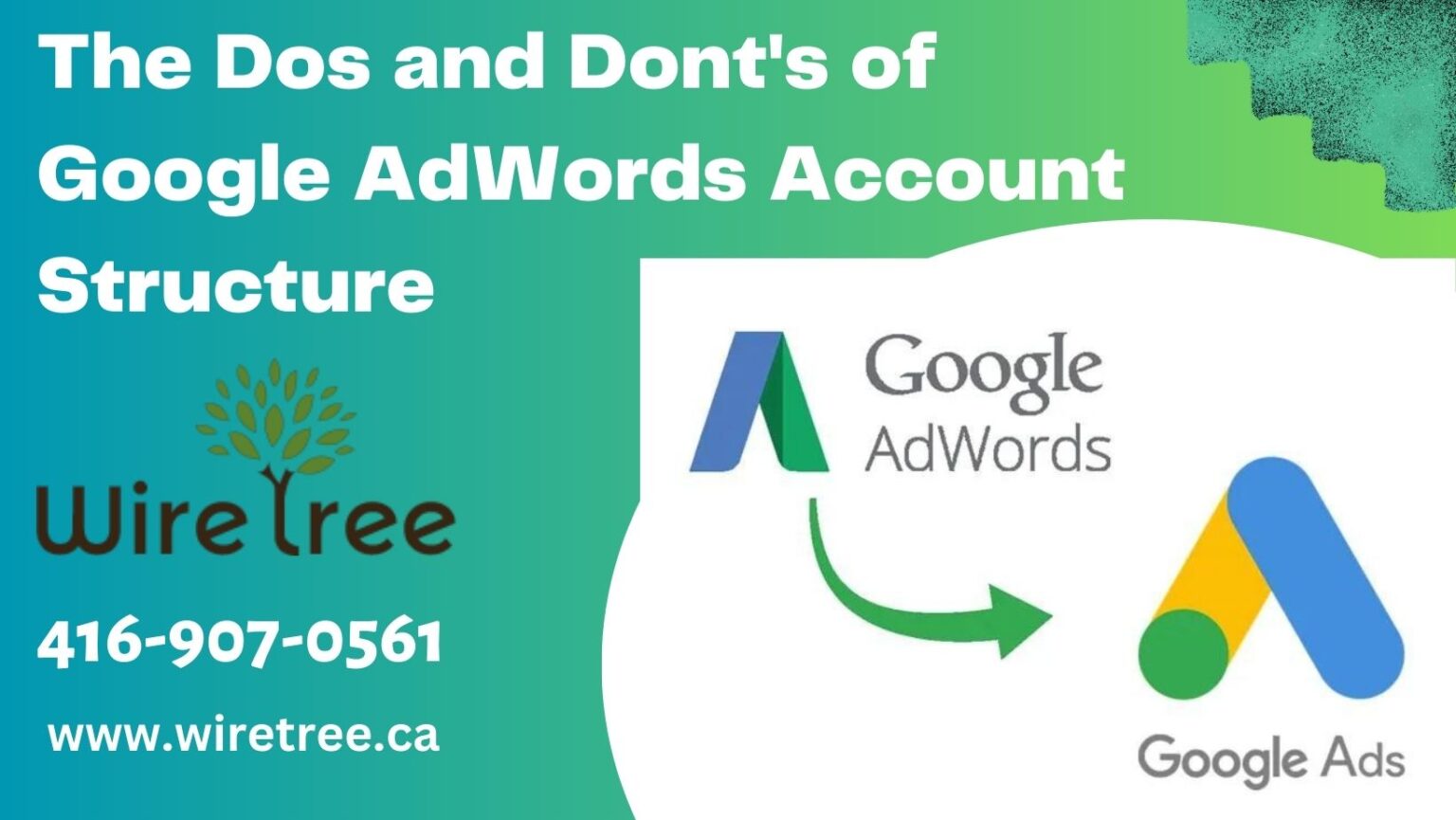As a digital marketer, you understand the significance of an organized Google AdWords account. With a well-organized AdWords account, you can quickly get better results – higher click-through rates, lower cost-per-click, and more revenue. In today’s post, we will share with you the dos and don’ts of an AdWords account structure, and what you can do to improve and become more successful!

The Dos:
Create a Logical Account Structure: Once you set up your AdWords account, it is essential to have a good logical hierarchy that follows the structure of your business. For you, that means breaking up your campaign into smaller, more focused ad groups so you can customize your ad copy and landing pages to meet the specific needs of each group.
Give them meaningful Names: Make sure to give your campaign, ad group, and keyword meaningful names. This simplifies how you move around your account and evaluate your data. It also keeps you organized and focused on what you set out to do.
Test More Than One Ad: Test more than one ad variation to find the best-performing ad in each ad group. Remember to experiment with multiple headlines, descriptions, and calls to action to find the ones that work best for your audience and generate the most leads.
Utilize Negative Keywords: Negative Keywords are one of the most critical aspects of every AdWords campaign. They allow you to block out irrelevant search terms and prevent your ads from being displayed to people who won’t convert.
Check Your Account Often: You should check your account often to see if everything works. Review errors, update bids, and refresh as necessary to ensure your campaigns are in tip-top shape.
The Don’ts:
Don’t Make Your Account Too Complex: Keep your account structure simple so users can easily find what they want. Don’t build too many campaigns or ad groups – this will typically confuse people/and be hard to manage/test.
Avoid Overlapping Keywords: Using the same keyword in multiple ad groups can cause confusion and competition between your ads. This can increase your cost-per-click and make your campaigns less effective.
Don’t overlook Mobile: As the internet is increasingly accessed via mobile devices, it’s crucial to ensure that your AdWords campaigns are set up for mobile. Ensure your landing pages are mobile optimized and focus your ads around your mobile users.
Do Not Dismiss Data: Allow data to be your compass, and it will help improve your campaigns. Pay attention to metrics such as clickthrough rate, conversion rate, and cost per click to find areas where you can optimize your campaigns.
Do Not Set It and Forget It: AdWords campaigns need to be managed and optimized monthly. Do not set and forget your campaigns. Instead, constantly evaluate and update your account and test new tactics to stay ahead.
To sum up, the key to success is having a well-organized AdWords account. With these dos and don’ts of Google AdWords account structure, you, too, can structure your campaigns for success and better business. Remember to test often, keep it simple, and make data-driven decisions.
